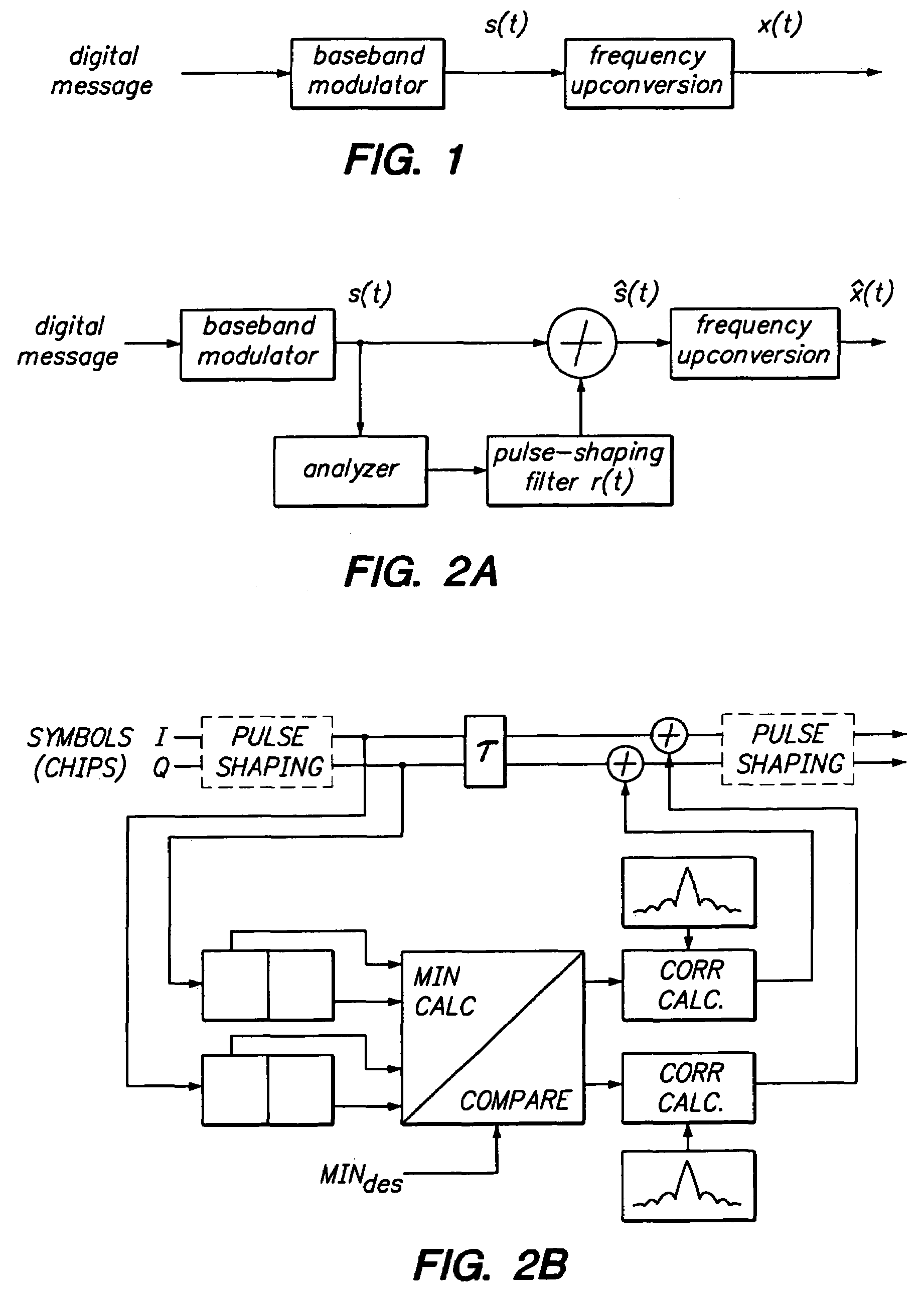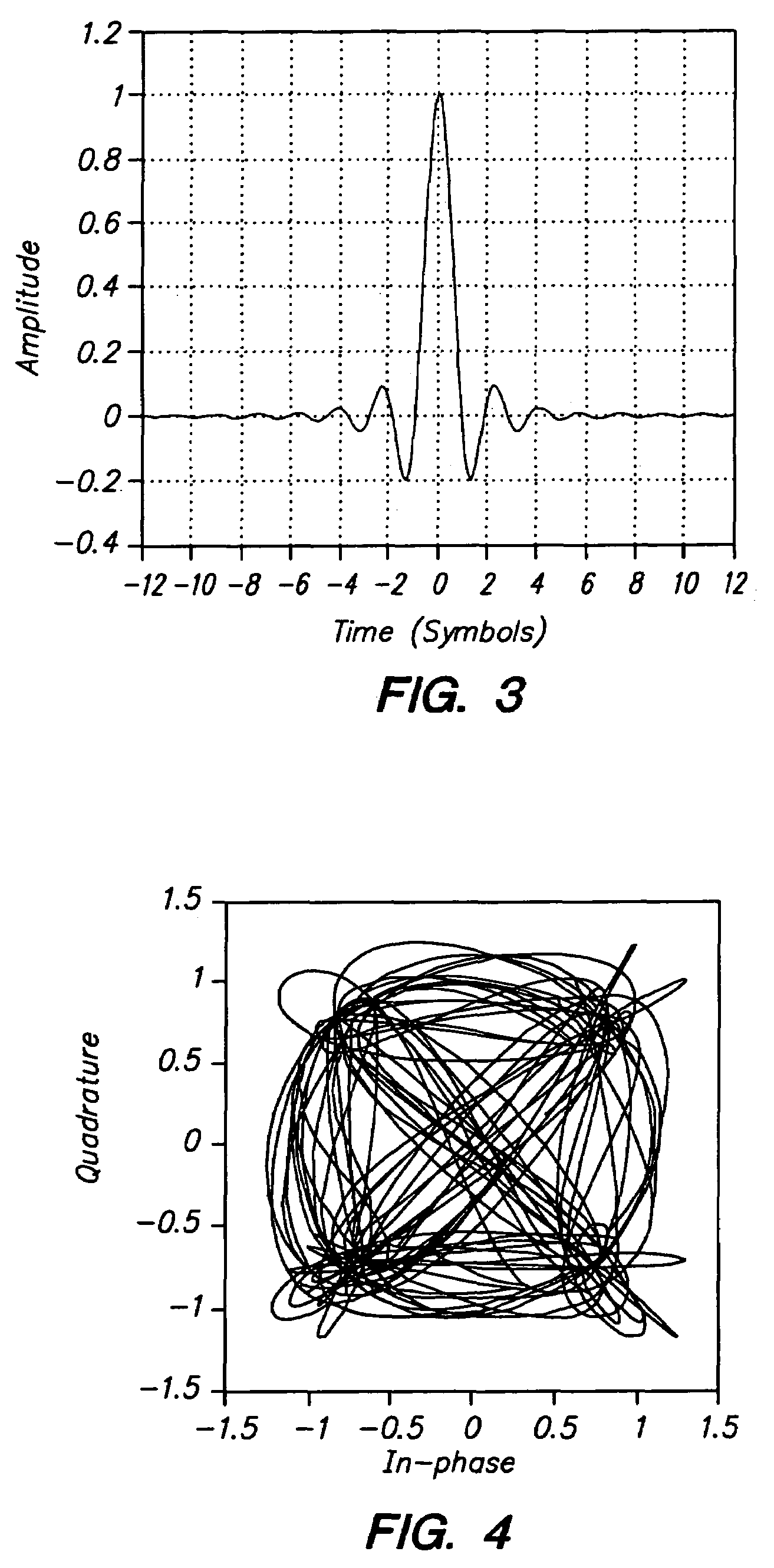Reduction of average-to-minimum power ratio in communications signals
a technology of communication signals and power ratios, applied in the field of reducing the average-to-minimum power ratio in communications signals, can solve the problems of unpractical modulation formats, and often difficult or essentially impossible to change the modulation, and achieve the effect of reducing the ratio of average power
- Summary
- Abstract
- Description
- Claims
- Application Information
AI Technical Summary
Benefits of technology
Problems solved by technology
Method used
Image
Examples
Embodiment Construction
[0076]A polar modulator can be viewed as a combination of a phase modulator and an amplitude modulator. The demands placed on the phase modulator and amplitude modulator are directly dependent on the bandwidth of the signal's phase and magnitude components, respectively. The magnitude and phase bandwidth, in turn, are dependent on the average-to-minimum magnitude ratio (AMR) of the signal. As will be shown later, a signal with large AMR can have very abrupt changes in phase, which means that the signal phase component has significant high frequency content. Furthermore, certain transistor technologies limit the AMR that can be achieved in a practical amplitude modulator. This limitation can lead to distortion of the transmitted signal if the required magnitude dynamic range exceeds that which can be generated by the transistor circuit. Thus minimization of signal AMR is highly desirable if the signal is to be transmitted with a polar modulator. One example of a polar modulator is de...
PUM
 Login to View More
Login to View More Abstract
Description
Claims
Application Information
 Login to View More
Login to View More - R&D
- Intellectual Property
- Life Sciences
- Materials
- Tech Scout
- Unparalleled Data Quality
- Higher Quality Content
- 60% Fewer Hallucinations
Browse by: Latest US Patents, China's latest patents, Technical Efficacy Thesaurus, Application Domain, Technology Topic, Popular Technical Reports.
© 2025 PatSnap. All rights reserved.Legal|Privacy policy|Modern Slavery Act Transparency Statement|Sitemap|About US| Contact US: help@patsnap.com



